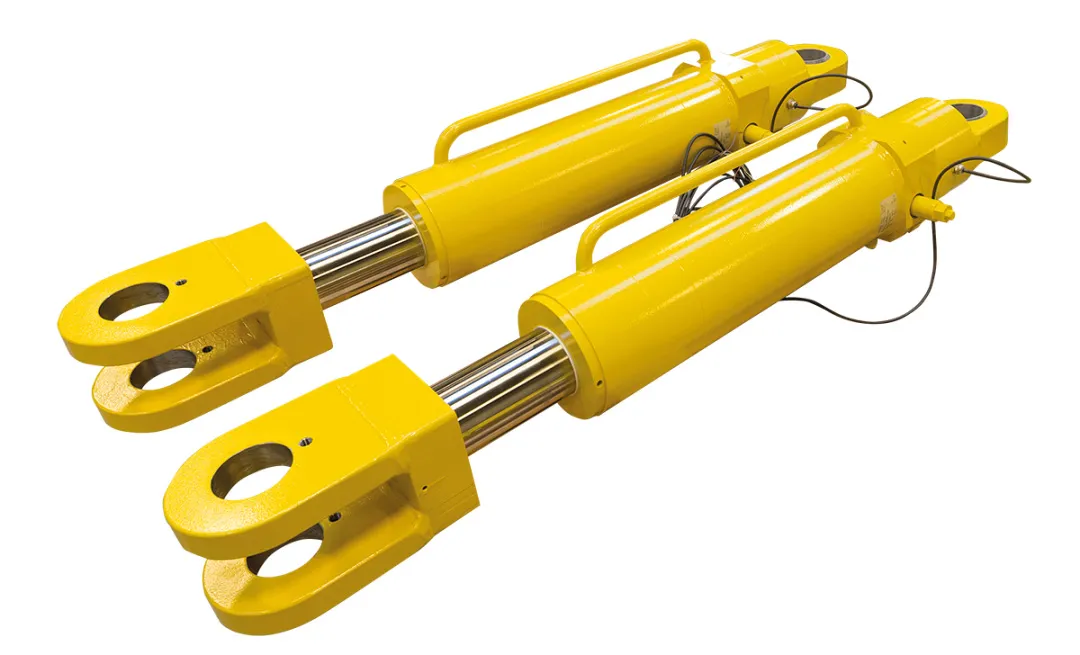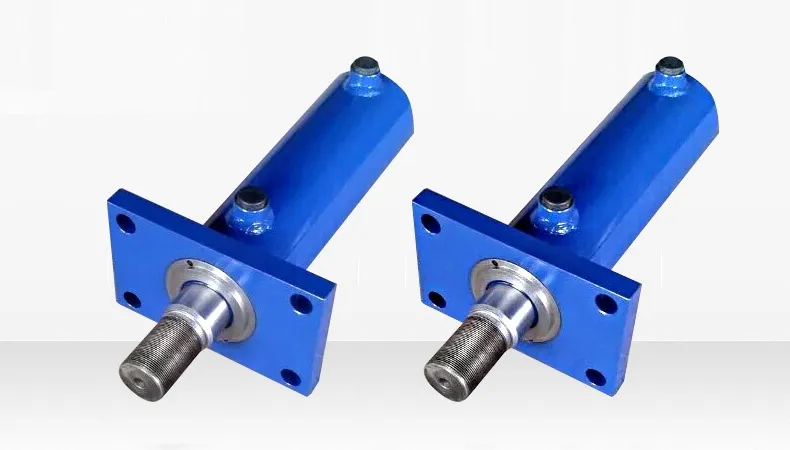The Importance Of Hydraulic System Testing Protocols For Synchronized Designs
Introduction to Synchronous Welding Hydraulic Cylinder
In the realm of hydraulic systems, synchronous welding hydraulic cylinders play a crucial role in ensuring the efficient and precise operation of various mechanical systems. These cylinders are designed with a focus on synchronous movement, high strength, and durability to meet the demands of heavy-duty applications.
Design and Construction Characteristics
- Easy Structure: The design of synchronous welding cylinders is characterized by a simple yet robust structure, utilizing high-quality materials and advanced welding technology.
- Geometry: Synchronized design considerations ensure that the cylinders are precisely aligned for optimal performance.
- Sealing Systems: Efficient sealing is vital for preventing leaks and ensuring high-pressure performance, with seal design optimization tailored to specific working environments.
Working Principle

The synchronous welding hydraulic cylinder operates by utilizing a synchronous mechanism that ensures precise movement of multiple cylinder blocks. This mechanism involves the transfer of force through hydraulic fluid, piston movement, workload distribution, and an efficient sealing system to maintain pressure and prevent leaks.
Three Types of Synchronous Welding Hydraulic Cylinders
There are three main types of synchronous welding hydraulic cylinders, each with unique configurations tailored to specific applications. These cylinders enable precise movement and synchronization for enhanced efficiency and safety.
Five Key Advantages
- High Strength and Durability: Welded designs provide exceptional strength and durability, making them perfect for heavy-duty applications. The continuous welds eliminate weak points often found in bolted connections, ensuring that these cylinders can withstand significant stress and harsh working conditions.
- Reduced Footprint: The compact nature of welded designs allows for significant space savings, making them ideal for installations where space is at a premium. This streamlined design facilitates easier integration into machinery and systems without sacrificing performance.
- Low Maintenance Requirements: With fewer connected parts, welded cylinders typically require less maintenance than their bolted counterparts. This reduction in maintenance not only lowers long-term operating costs but also minimizes downtime, enhancing overall operational efficiency.
- Better Fatigue Resistance: Welded cylinders are engineered to exhibit excellent fatigue resistance, making them well-suited for continuous operation under high loads. Their robust construction helps prevent premature wear, ensuring reliability and longevity, even in demanding applications.
Performance Characteristics
- High-Precision Control: These cylinders provide precise movement and position control, allowing for accurate synchronization in operations. This precision is crucial in applications where exact positioning is vital.
- Fast Response Speed: Synchronous hydraulic cylinders are engineered for rapid response times, enabling quick adjustments to operational demands. This responsiveness enhances overall system efficiency and productivity.
- Uniform Load Distribution: The design of these cylinders ensures even load distribution across multiple points. This uniformity contributes to stability during operation, reducing the risk of structural stress and improving safety.
- Vibration Reduction: Synchronous cylinders are effective at minimizing vibrations, which can lead to smoother operations and less wear on machinery. This characteristic is essential for maintaining the integrity of sensitive equipment.
- Durability: Built with high-strength materials, these cylinders are designed to withstand harsh conditions and heavy usage. Their robust construction ensures long-lasting performance, making them suitable for demanding environments.
- Efficient Sealing: Synchronous welding hydraulic cylinders feature advanced sealing technologies that ensure reliability by preventing leaks and maintaining system pressure. Effective sealing is crucial for optimal performance and reduced maintenance needs.
Application Scenarios
- Construction Engineering: These cylinders are widely used in cranes, excavators, and lifts, ensuring coordinated movements for heavy lifting and positioning. Their ability to synchronize multiple cylinders enhances safety and efficiency on construction sites.
- Agricultural Machinery: In tractors and harvesters, synchronous welding hydraulic cylinders facilitate precise control for tasks such as tilling, planting, and harvesting. This precision improves operational efficiency and crop yield.
- Manufacturing Automation: Synchronous cylinders play a critical role in robotic arms and assembly lines, where they enable accurate and efficient movement. This synchronization boosts productivity and reduces cycle times in manufacturing processes.
- Mining Equipment: In mining operations, these cylinders assist in lifting and moving heavy machinery, providing stability and reliability. Their design ensures smooth operation in the challenging conditions often found in mining environments.
- Marine Engineering: Synchronous welding hydraulic cylinders are essential for controlling lifting platforms, hatch covers, and other mechanisms on ships and offshore structures. Their reliability is crucial for safe and efficient operations at sea.
Design Considerations and Selection Criteria
When selecting synchronous welding hydraulic cylinders, it is essential to consider factors such as bearing capacity, sealing effectiveness, durability, safety features, and ease of maintenance. These considerations ensure optimal performance and reliability in diverse applications.
Sealing and Lubrication
Proper sealing and lubrication are critical for the performance and longevity of synchronous welding hydraulic cylinders. The use of high-quality seals and regular lubrication maintenance enhance the efficiency and durability of the cylinders.
Regular Inspection and Maintenance
To ensure the optimal functioning of synchronous welding hydraulic cylinders, regular inspection and preventive maintenance measures are essential. These measures include checking for wear, lubricating components, and replacing seals as needed to prevent downtime and ensure safety.
Installation Guide

Installing synchronous welding hydraulic cylinders requires precision and attention to detail. Following the correct installation procedures ensures proper functionality and longevity of the cylinders in various applications.
Maintenance Tasks
Common maintenance tasks for synchronous welding hydraulic cylinders include regular inspection, proper lubrication, seal replacement, and calibration checks. Adhering to these tasks helps extend the service life of the cylinders and ensures optimal performance.
Safety Considerations
Ensuring safety measures when using synchronous welding hydraulic cylinders is paramount to prevent accidents and maintain a secure working environment. Adhering to safety protocols and guidelines minimizes risks and enhances operational safety.

Fault Diagnosis and Common Problems
Identifying faults and addressing common issues with synchronous welding hydraulic cylinders is essential for maintaining optimal performance. By diagnosing problems promptly and implementing effective solutions, downtime can be minimized, and system efficiency improved.
Questions and Answers
1. How do synchronized hydraulic cylinders improve system performance?
Synchronized hydraulic cylinders play a pivotal role in enhancing system efficiency by facilitating precise and synchronous movement across various industrial applications. By coordinating the actions of multiple cylinders, these systems ensure that machinery operates smoothly and effectively, reducing the risk of misalignment and mechanical strain.
This synchronization is especially valuable in applications requiring simultaneous movements, such as in construction equipment, manufacturing lines, and heavy machinery. The ability to maintain equal force and speed across cylinders not only improves overall performance but also extends the lifespan of the equipment by minimizing wear and tear.
Moreover, synchronized hydraulic systems contribute to safer operations. By ensuring that all components move in harmony, the risk of accidents or equipment failure is significantly reduced. This leads to increased productivity and a more reliable working environment.
2. What are the primary advantages of using welded cylinders over bolted designs?
Higher Strength: The continuous material structure provided by welding enhances the overall strength of the cylinder. This eliminates potential weak points often found in bolted connections, making welded cylinders especially suitable for high-pressure applications where reliability is critical.
Durability: Designed to withstand extreme conditions, welded cylinders boast exceptional durability. They can handle heavy loads, harsh environments, and fluctuating temperatures, ensuring a long service life even in the most demanding settings.
Compact Size: Without external bolts and flanges, welded cylinders offer a more streamlined and compact design. This is particularly advantageous in applications with space constraints, allowing for easier integration into existing systems without compromising performance.
Lower Maintenance Requirements: With fewer components to monitor and maintain, welded cylinders generally require less upkeep than bolted designs. This not only saves time and resources but also reduces the risk of leaks and failures, leading to more efficient operations.
Better Fatigue Resistance: Welded cylinders are engineered to resist fatigue better than bolted alternatives. Their robust construction allows them to endure repeated cycles of loading and unloading, making them ideal for applications that involve continuous movement and stress.
3. What materials are typically used in the construction of these cylinders?
Synchronous welding hydraulic cylinders are constructed using high-strength materials such as steel, ensuring durability and performance under high pressure conditions.
Long Tail Keywords
1. Hydraulic Cylinder Replacement Services: Our company specializes in providing hydraulic cylinder replacement services for various industries.

2. Customized Hydraulic Cylinder Solutions: We offer customized hydraulic cylinder solutions tailored to meet specific application requirements.
3. Wholesale Distribution of Hydraulic Cylinders: Our company serves as a wholesale distributor of hydraulic cylinders, providing cost-effective solutions for businesses.
Company Overview
We are a leading hydraulic cylinder replacement manufacturer with a comprehensive product line catering to domestic and international markets. Our company is renowned for its professional services, international certifications, customized solutions, state-of-the-art production equipment, and dedicated after-sales service.
Author: lyl
